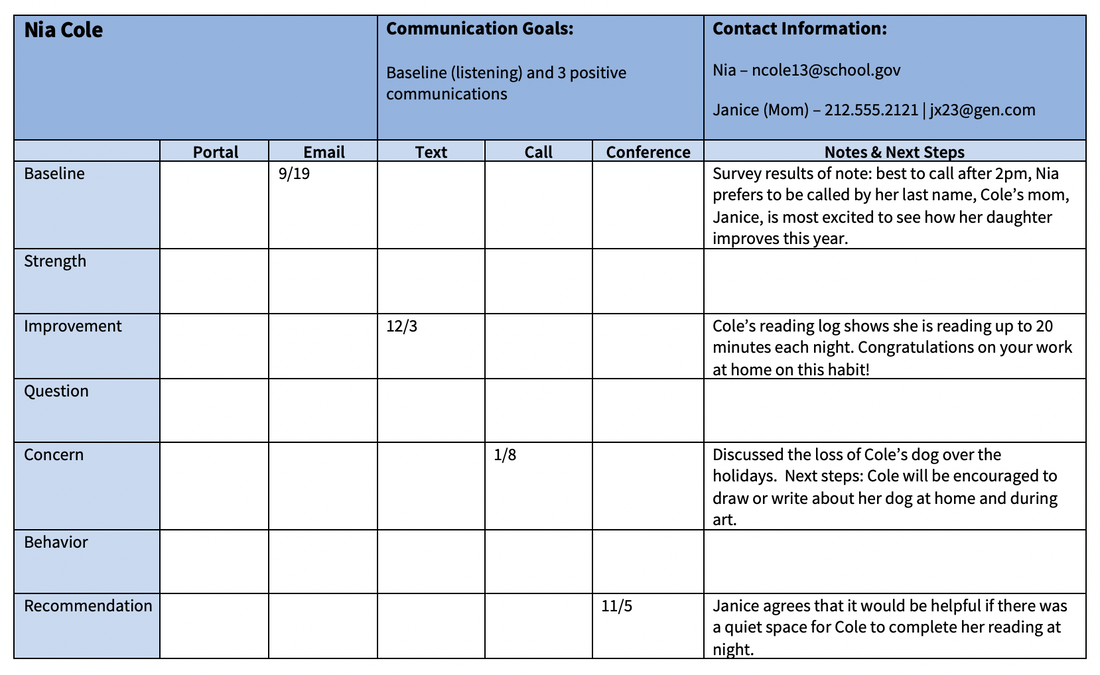|
Strengthening your communication with students and families can seem daunting. How can you get started?
“The importance of good parent-teacher relationships has been well documented. Research has shown that parent involvement in education benefits not only the child but also the parents and teachers.”
We want our students, parents, and teachers to experience these benefits.
Challenges are easy to list, and we likely have a long list beyond these, but here are some of the big ones.
Start by planning
Strengthening your communication with students and families can start as simply as organizing your approach. Whether you’re approaching the beginning of the year, a new term, or are in the middle of a course, trying a new tool that can be customized to your unique communication style and your school’s expectations for family contact will support your work.
Communication goals
In the example below, our first goal was to start with listening, in this case using a baseline survey to the student’s parents that establishes a connection and supports us in understanding our student from the parent’s perspective. Our second goal was to have three positive contacts with the family, in addition to any contacts necessary to discuss issues that may arise in the classroom. From here, we would continue to add our notes and check in on communication that may be needed in order to meet our goals. This template can continue to be streamlined or expanded as practices change over time. While the content of parent/teacher conversations may not always be easy, simply getting started can give you confidence and increase the ways in which you can connect with families. |
|
The Center for Professional Education of Teachers (CPET) at Teachers College, Columbia University is committed to making excellent and equitable education accessible worldwide. CPET unites theory and practice to promote transformational change. We design innovative projects, cultivate sustainable partnerships, and conduct research through direct and online services to youth and educators. Grounded in adult learning theories, our six core principles structure our customized approach and expand the capacities of educators around the world.
|
ABOUT US
525 West 120th Street, Box 182 New York, NY 10027 416 Zankel Ph: (212) 678-3161 [email protected] Our Team Career Opportunities |
RESOURCES
Professional Articles Ready-to-Use Resources Teaching Today Podcast Upcoming PD Opportunities |
COACHING SERVICES
Custom Coaching Global Learning Alliance Literacy Unbound New Teacher Network Student Press Initiative |






















